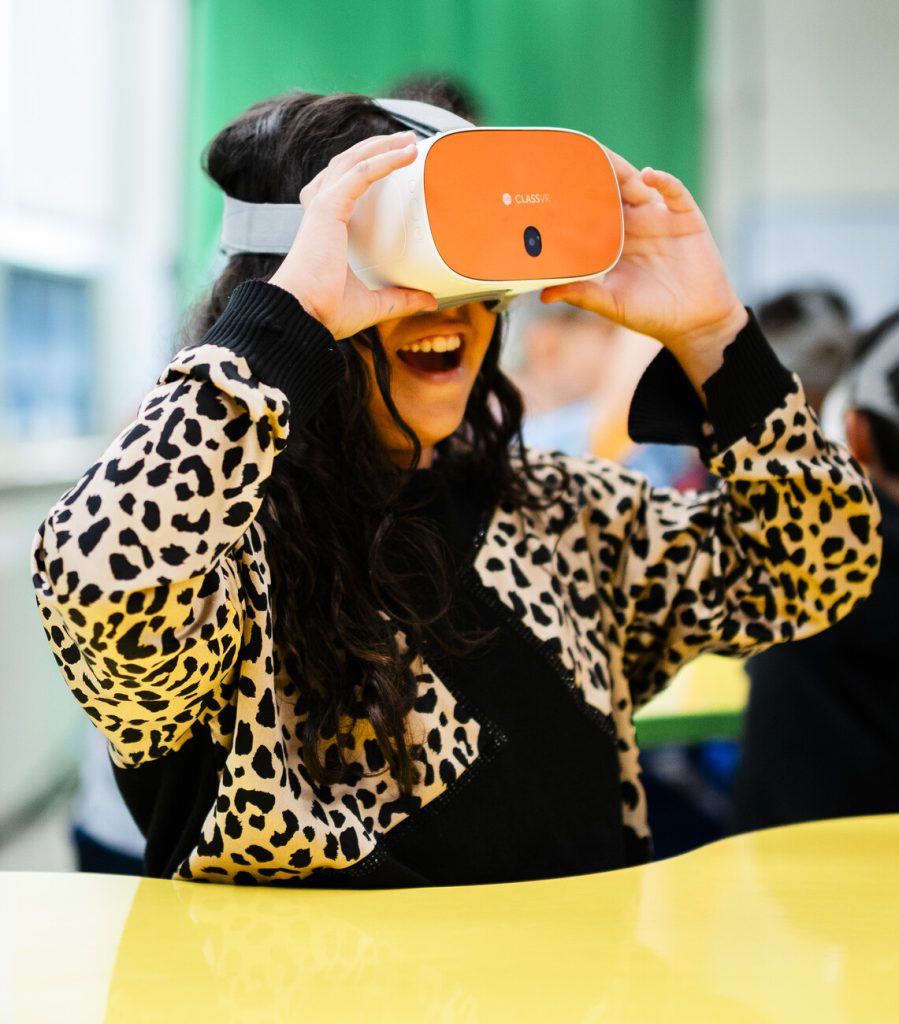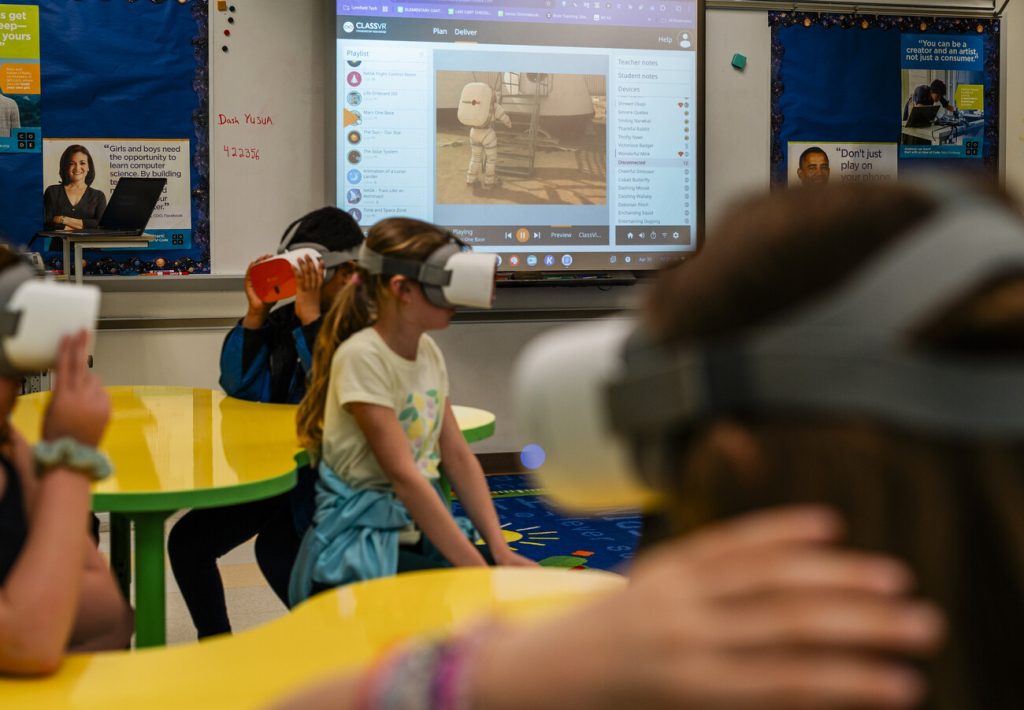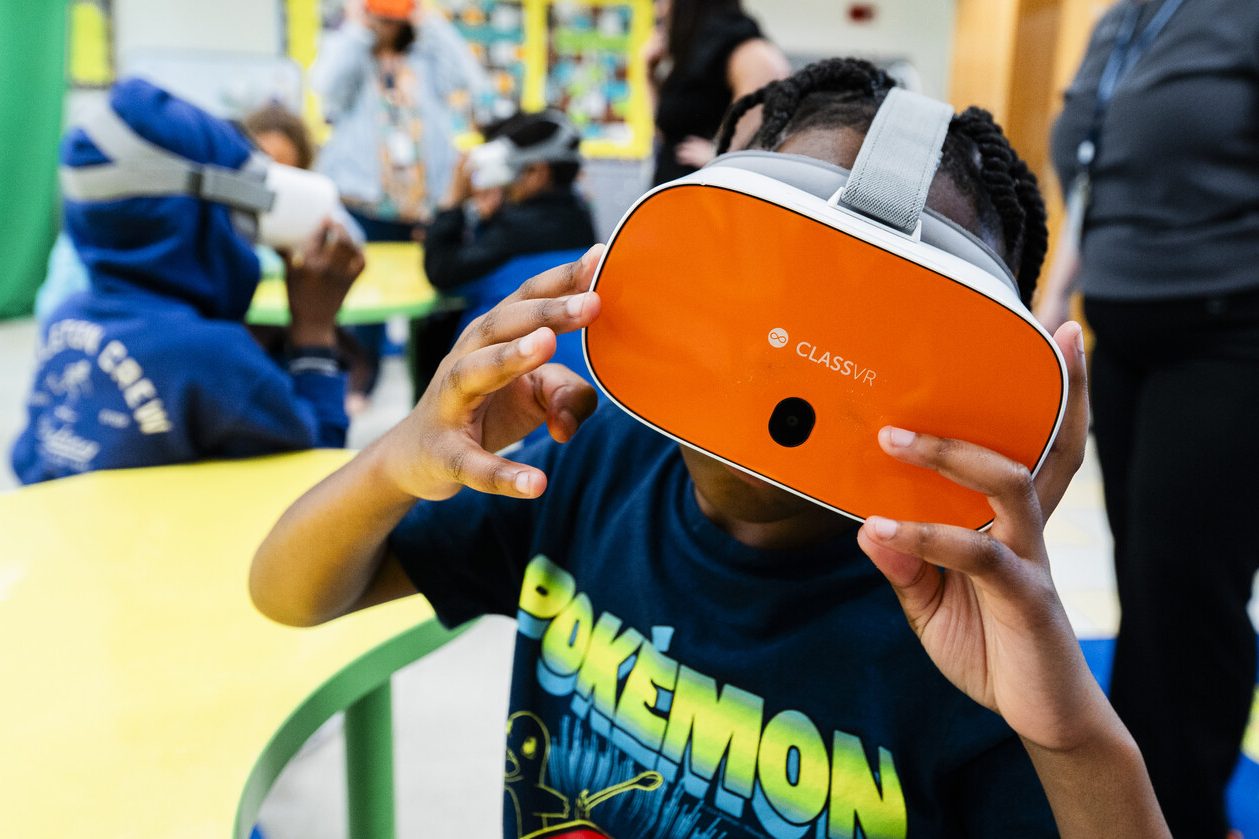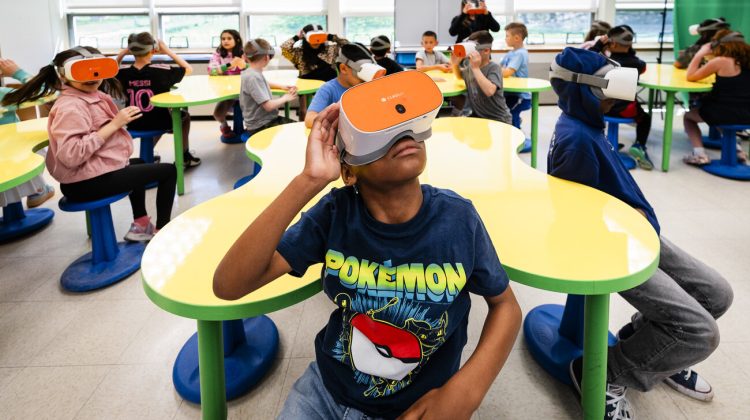A third grade class at the Huckleberry Hill School had the time of their lives exploring the universe up close and personal.
Approximately 20 students in teacher Lynne McCumber’s class took part in a virtual reality presentation using Avantis ClassVR headsets, which allowed them to experience a 3D view of outer space.
The headsets were made possible thanks to an $8,998 mega grant from the Lynnfield Educational Trust.
“It was the first-ever mega-grant from Lynnfield Educational Trust,” Grade 7-12 Digital Learning Coordinator Heather Koleszar said.

“Usually, they do mini-grants or regular grants. I was getting a lot of requests for virtual reality sessions that are tied into the curriculum, but I didn’t have enough headsets to go around. We had 32 headsets through prior funding, which was enough for one classroom to use at once, but this grant allowed us to purchase 16 more. It will expand our ability to offer more sessions.”
The headsets have built-in software that allows Koleszar to control them from her computer and send signals out to the devices, which resemble oversized goggles. Users have a 360 degree view and, by moving their heads and repositioning their bodies, they can change what they see and zoom in to a get a closer look.

Koleszar said topics are selected based on what teachers are teaching in class. 90% of the time sessions are tied into the curriculum as an “extra way of accessing the curriculum, but occasionally, as a reward, a fun topic is selected.”
The space session may have been tied into McCumber’s science curriculum, but you would never know it was supposed to be an exercise in learning. The bottom line is these kids were flat out just having fun.
They couldn’t wait to get started, patiently listening while Koleszar set down the ground rules. But once she hit the go button and the images appeared on the headsets, the students were all in, ooing, ahhing and, at times, shrieking with genuine excitement for the rest of the one-hour session.
The space program covered nine topics, starting with a solar eclipse. Students watched as the sun disappeared behind the moon, then reappeared, revealing a sky full of stars, much to the delight of the students.
From there, the students went on to visit the NASA flight control room and the International Space Station where students shouted out the things they found – astronauts, beds, space suits, storage units and — believe it or not, a Rubik’s cube.
“I liked seeing the space station,” third-grader Callahan Dubois said. “There were lots of flags, and I saw two astronauts floating: one in an astronaut space suit, and the other one was in blue work clothes, and I saw a Rubik’s cube that was floating.”
Other topics included the sun, the solar system, complete with moons and spinning planets, astronaut training and Mars.
“I liked the sun because you could see the many layers of it,” Deh’Lani Spence said. “I also got to see a bunch of moons and rings on Saturn in the solar system.
“I also liked seeing all the different planets and I liked seeing the sun in different layers,” Callahan said.

Students also experienced a lunar landing through animation and the time and space zone in which they got to choose their own adventure.
“They can really move around in the time and space program, which they really love,” Koleszar said.
Koleszar said she’s been presenting virtual reality programs in Lynnfield classrooms for about two and one-half years. In that time, the number of offerings available for K-12 has increased dramatically with tie-ins to just about any school subject you can think of including English, literature, science, social studies, history, math and world language.

“Kids can tie in to history and see Rosa Park’s seat on the bus and they can also go to the Washington Monument where they can see poster placards from that time so they can learn about the slogans that were being used at the time,” Koleszar said. “They can go into a World War 1 trench with bombs going off and gunfire as if you were in real battle. They can visit the home of King Richard III and can also go under the Sea with their Wit and Wisdom literature class.”
LET’s website said, “Students at all levels – and their teachers – rave about these instructional tools and how the technology brings them so close to what they’re learning about. This will allow greater access to the kits throughout our district. LET is extremely excited about being able to fund a grant that benefits every student in the district.”



